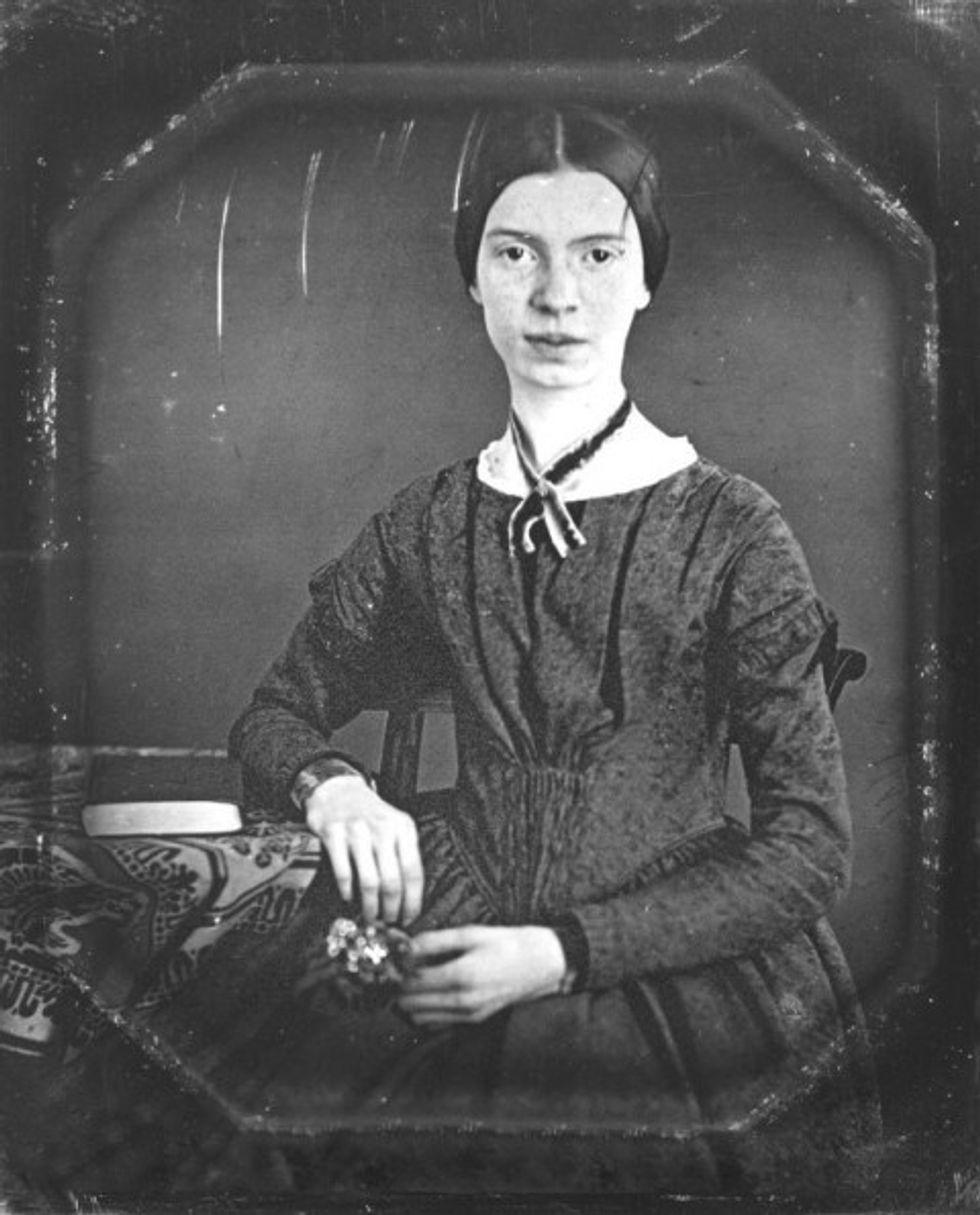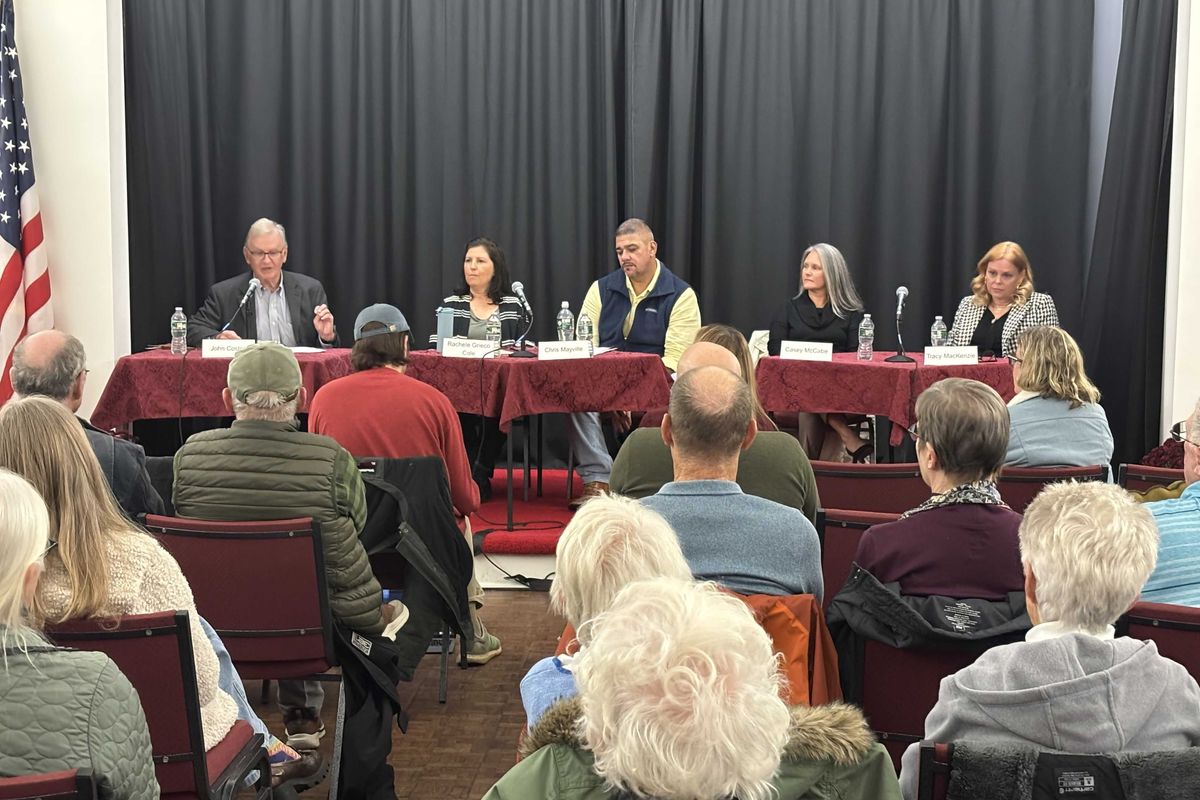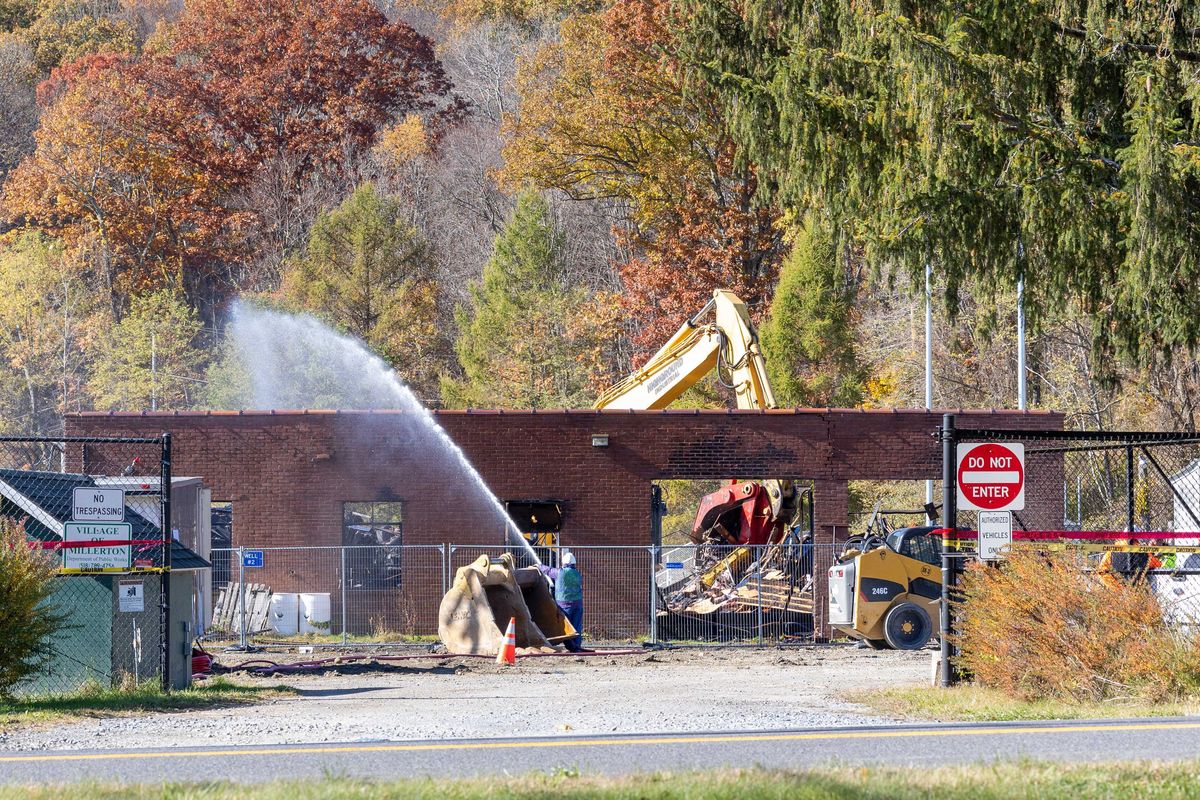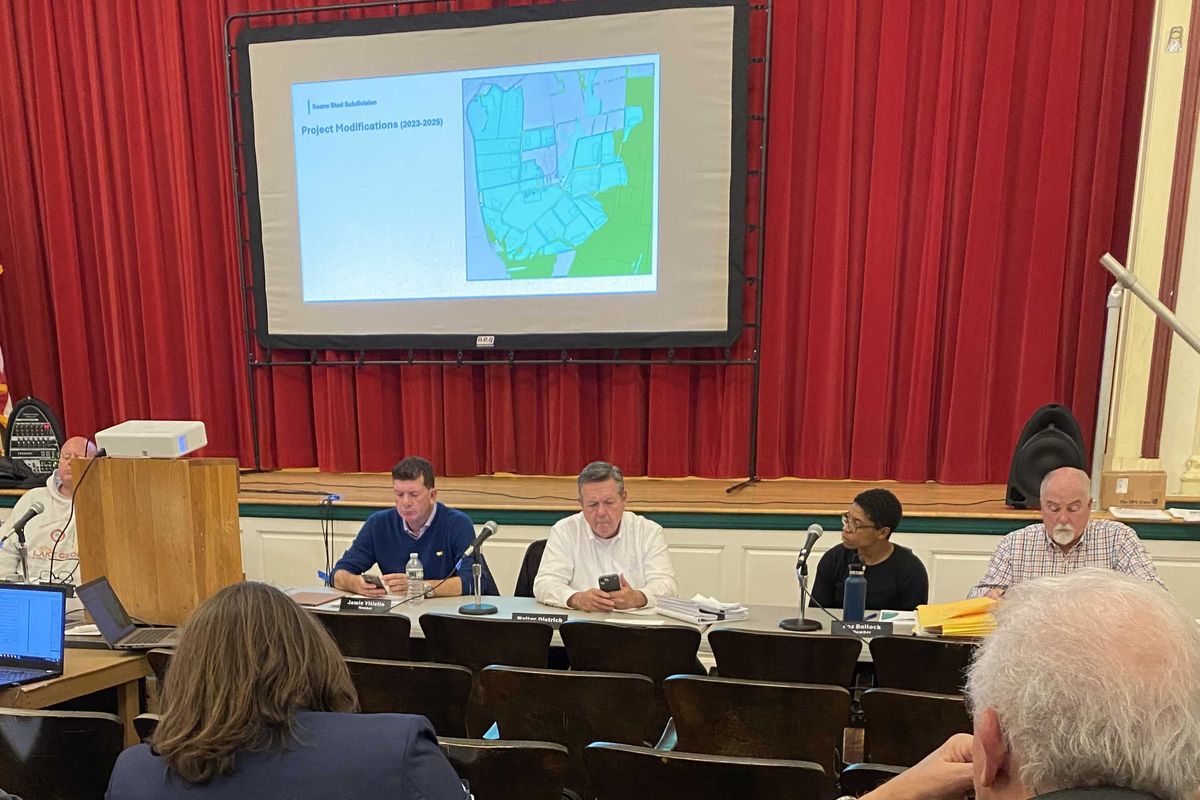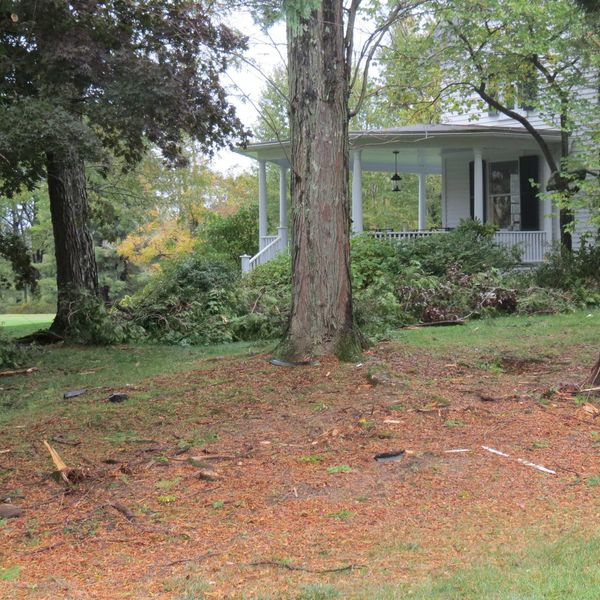Latest News
Demolition crews from BELFOR Property Restoration began demolishing the fire-ravaged Water and Highway Department building in the Village of Millerton on Monday, Oct. 27
Photo by Aly Morrissey
MILLERTON — The long-awaited demolition of Millerton’s Highway and Water Department building began Monday, Oct. 27, marking a major milestone in the village’s recovery from the February fire that destroyed the facility.
The demolition, handled by BELFOR Property Restoration, is now underway. Eddie Collins Park, located next to the site, remains open to the public, though visitors are asked to steer clear of the demolition area.
One village official is particularly invested in seeing the process move forward. Caroline Farr-Killmer, the village’s fire project manager, has been working closely with Mayor Jenn Najdek and the Board of Trustees to oversee every phase of the recovery. She has coordinated contractors and engineers, tracked inventory losses, and ensured compliance with building codes.
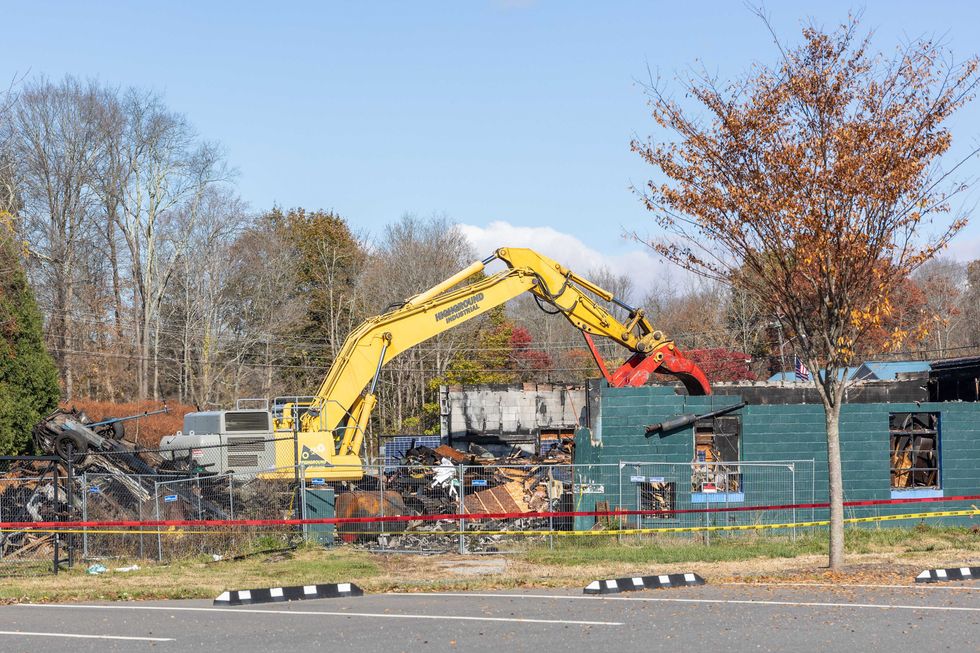
“This milestone is a significant one,” Farr-Killmer said. “It has been a work in progress that individuals have poured a lot of their time and effort into.” She acknowledged that while it may have seemed like progress was slow, this process required thoughtful and thorough management. “It is not something that can be accomplished overnight. I am grateful for the team effort put in by all of those involved.”
In the weeks after the fire, Farr-Killmer visited the charred building almost daily and documented damage to the structure and inventory. She said the fire itself was only the beginning, and pointed out that navigating insurance, rebuilding plans and deadlines have been hidden challenges.
The demolition marks the first physical step toward rebuilding. Farr-Killmer and Village leaders are developing plans for two replacement facilities — one for the Highway Department and another for the Water Department, designed to meet modern building codes and accommodate future needs.
“For the Village, it means we are starting from scratch, but things will continue to run smoothly, efficiently and effectively,” Farr-Killmer said.
With demolition underway, the Village of Millerton will begin a new chapter — one that will be complemented by the upcoming renovations that are planned at Eddie Collins Memorial Park. Construction for that major project, which will include a short-course Olympic pool and pool house, is scheduled to begin in July 2026 after the 175th celebration.
Keep ReadingShow less
A preliminary draft of an impact analysis study for a Keane Stud subdivision application drew residents to a Planning Board meeting on Wednesday, Oct. 22.
Photo by leila Hawken
AMENIA — Residents had the opportunity on Wednesday, Oct. 22, to weigh in on the proposed Keane Stud subdivision, a plan that would divide roughly 605 acres into 27 mostly residential lots, during a meeting of the Amenia Planning Board.
The session was part of the State Environmental Quality Review Act process, following the board’s decision that a Draft Environmental Impact Statement should be prepared to evaluate potential environmental and scenic impacts from the project.
The study will help inform the board’s review and approval process.
Wednesday’s meeting served as a public scoping session, allowing residents to suggest which environmental and community issues should be analyzed as part of the study.
Peter Feroe, an environmental planner with AKRF, Inc. of New York City representing the developer, presented an overview of the project and outlined the preliminary scope of analysis.
About 35 residents attended the meeting at Town Hall, where Feroe explained that the plan calls for 23 residential-agricultural lots and four lots to be set aside for conservation and equestrian use. Two of the preserved parcels would remain forested as conservation areas, while the other two would support equestrian activities.
The 23 lots would be sized at 10 acres each. Since the entire area is within a designated Scenic Protection Overlay District, the layout requires Planning Board approval.
The proposal calls for the 23 lots to be served by three roads that presently exist as farm roads on the acreage, Feroe said, although the three roads would need to be improved for use.
“This is not a public hearing on the subdivision application,” Planning Board attorney Paul Van Cott said, noting that the decision will be made after the completion of the impact studies.
“There will be full public hearings on the impact studies and on the full Keane Stud subdivision application, perhaps two months from now,” Van Cott said.
Feroe reviewed maps of the property located on Depot Hill Road, off Old Route 22. Nine of the ten acres on each lot would be conserved.
“A full 90% of the site would be reserved for agriculture,” Feroe said, noting that no buildings are envisioned as part of the subdivision application. Purchasers of the lots would need to come before the Planning Board for site plan approval.
The Planning Board had asked the applicants to consider the effects of future potential residential build-out on the acreage.
“The goal is to continue to promote agriculture to preserve the rural character,” Feroe said, noting that the town’s comprehensive plan favors balance in development.
Since planning for the subdivision began in 2021, Feroe said, multiple project modifications have been made, including reductions in size, removal of lots, and revisions to the layout. The maximum home footprint was scaled back, and the maximum home height reduced to 28 feet.
All development restrictions imposed by the Planning Board would be included in covenant deed restrictions to be adhered to by lot purchasers, Feroe noted.
Residents’ comments centered on the theme of a feared loss of agricultural heritage inherent to the community’s character, and the desecration of the view from the DeLaVergne Hill lookout to the west.
Resident George Bistransin spoke of diminished agriculture in the area and its impact on farming, noting that he now buys hay from a Salt Point supplier for his animals.
Mark Doyle, representing the Conservation Advisory Council, described potential impacts on water bodies and active farmland.
“There should be no division or construction on the viewshed area,” said resident Sharon Kroeger, secretary of the Committee to Save the View from DeLaVergne Hill, an organization dedicated to protecting the viewshed seen as key to the community’s identity.
Recalling his past experience serving on the Planning Board, Town Supervisor Leo Blackman spoke of the iconic view from DeLaVergne Hill, called by many the “Gateway to the Berkshires.”
Blackman said he was troubled by the idea that the unobstructed agricultural land would be broken up, suggesting the house lots should be separated from the agricultural expanse.
The next Planning Board meeting, on Wednesday, Nov. 12, is expected to include adoption of the final draft of the current scoping analysis. The study can be viewed in full on the town website.
Keep ReadingShow less
The Sun River Health Center in Amenia welcomed visitors to its Rural Health Fall Fest on Wednesday, Oct. 22. Assembling for a photo at Sun River’s booth were, left to right, Cherise McDaniel, Director; Crystal Marr, Associate Vice-President of Substance Use Disorders; Yvette Ramirez, Outreach Coordinator; and Elizabeth Phillips, Vice-President of Community Engagement.
Photo by Leila Hawken
MILLERTON — The North East Fire District held a public hearing Tuesday, Oct. 21, to review its proposed 2026 budget. With no public comment, the Board of Fire Commissioners approved the $787,813 plan during its regular monthly business meeting, which followed.
Fire District Chair Dave McGhee read a resolution to override the tax levy limit established under New York’s General Municipal Law Section 3-c for the 2026 budget year. In a roll-call vote, the Board approved the resolution and adopted the budget.
The 2026 budget represents a 2% increase, consistent with the district’s typical year-over-year growth. The 2025 budget was $771,366 and the 2024 budget was $756,222.
Among the largest line items is the Capital Apparatus Reserve Fund, earmarked at $100,000. This includes funds for general equipment, which could go toward a new Quick Attack truck — a small, 4-wheel-drive vehicle designed to reach fires or emergencies quickly, even over rough terrain.
Property development also held a sizable line item of $130,000. Recent improvement projects have included maintenance at the Millerton Fire House, including new floors, gutter replacement to prevent water damage and flooding that had been a common occurrence, new siding and paint and a heated walkway to manage snow and ice in the winter months.
As required under New York Town Law 181, the North East Fire District conducts this budget process annually, including a public hearing, providing residents with the opportunity to give feedback. Copies of the adopted 2026 budget are available for review at the Town Clerk’s office, the fire district secretary’s office and the Millerton Fire House.
Halloween haunted tunnel
Kelly Roger, treasurer and fire police captain, is once again leading the spooky festivities at the Millerton Fire House this Halloween. Residents can walk through a haunted tunnel from 5–7 p.m., or until candy runs out.
At the end of the tunnel, Roger will be distributing blank “Santa Run” letters to local children whom reside in the Village of Millerton or Town of North East for the now-annual Santa Run so they can submit their holiday wish list. “Our taxpayers are such wonderful people, and they give a lot. We want to support them and their children,” Roger said.
The Santa Run — a tradition born during COVID that has continued — delivers small gifts to children on Dec. 13 in mid-December, with the Big Guy himself making the rounds.
Keep ReadingShow less
loading

